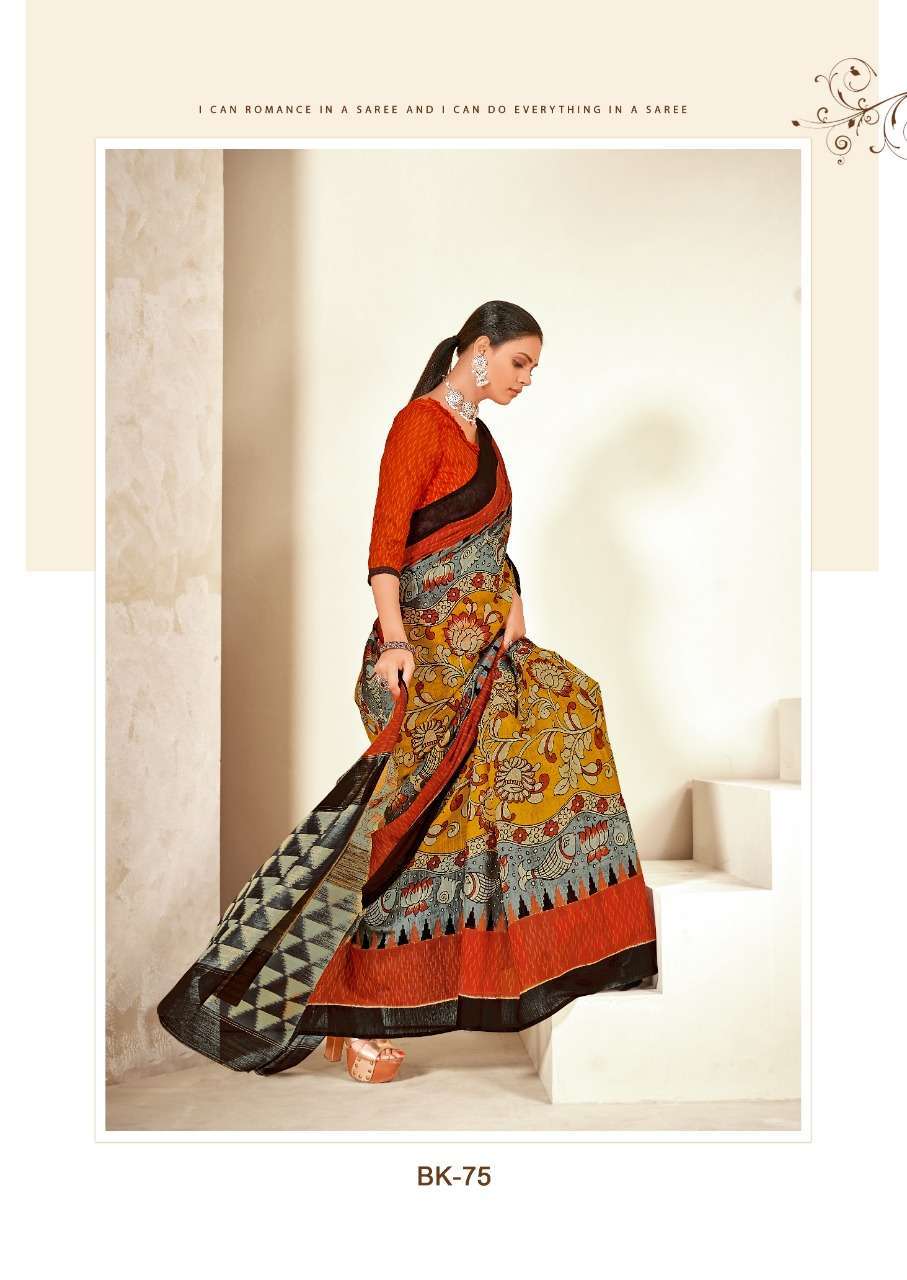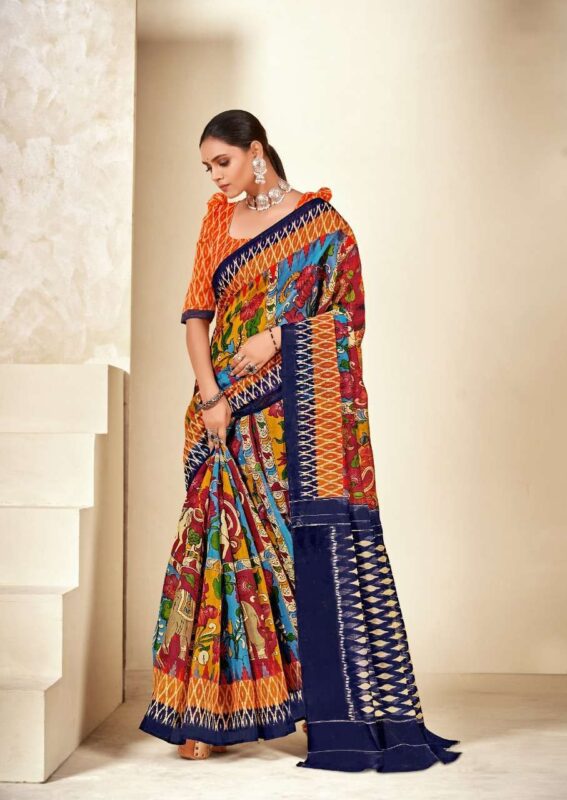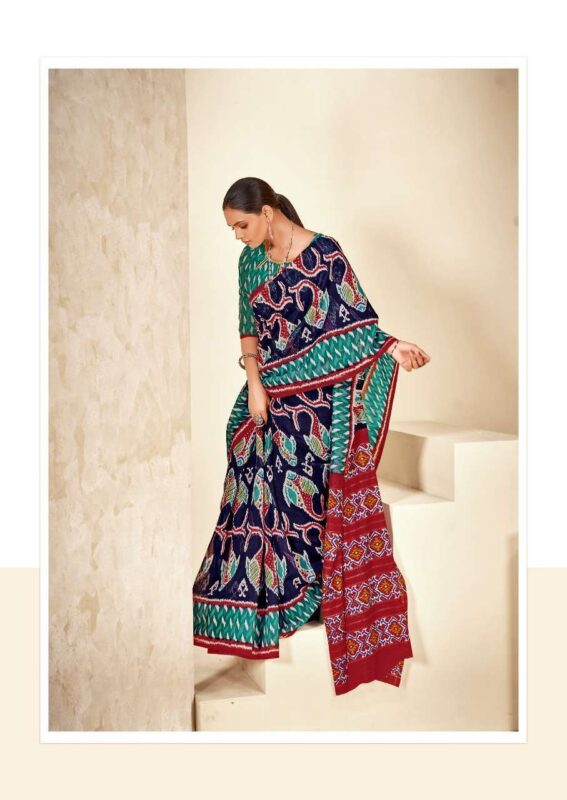Beautiful Soft Cotton Sarees

History of Soft Cotton Sarees
The beautiful soft cotton sarees origins of sari-like draperies can be found in the Indus Valley civilization, which grew to prominence in the northwest of the Indian subcontinent between 2800 and 1800 BCE. In the fifth millennium BCE, cotton was first grown and woven on the Indian subcontinent. Many of the dyes employed throughout this time, including turmeric, lac, red madder, and indigo, are still in use today. Between 2450 and 2000 BCE, silk was woven.
Beautiful Fancy soft cotton | PX0261D |
Early Hindu literature refers to the word “sari,” which originated in Sanskrit, as women’s clothing. The sari, also known as ϛāṭikā, originated as a three-piece outfit that included the uttarīya, a veil worn over the head or shoulder, the stanapatta, a chestband, and the antarīya, the bottom garment. During the sixth century BCE, this group is mentioned in Buddhist Pali literature and Sanskrit literature.
Renowned for its cotton sarees
Cottons from Kanchipuram Kanchipuram, in Tamil Nadu, is the birthplace of Kanchi cotton sarees, just like their silk cousin. These sarees are quite popular with women of all ages because of their fine workmanship, elaborate motifs, and vivid colors.

Identify a pure cotton saree
Natural Fiber Appearance:
Fabric made entirely of cotton has a natural texture that shows the fibers. Seek out minute imperfections, such as little changes in thickness and minimal slubs, as these signify the herbal qualities of cotton fibers.
created the first cotton fabric:
The beautiful cotton sarees for 3,000 years BC saw the cultivation, spinning, and weaving of cotton in the Indus River Valley of Pakistan. Cotton clothing was being made and worn by the people of the Nile valley in Egypt around the same time. Around 800 A.D., cotton fabric was introduced to Europe by Arab traders.
There are various kinds of cotton sarees:
Cotton sarees come in a wide variety of exquisite styles. This blog has information about several varieties, including Khadi, Kota Doria, Chanderi, Ikat, and Bandhani.
A quick overview of saree history:
Its likely 5000-year roots cover a wide geographic area: History > Men and women have been wrapping unstitched cloth since the beginning of the Indian Subcontinent. This custom dates back to the Indus Valley period, as evidenced by the shawl that is thrown over the statue of an Indus priest.

Weaving Process
The primary raw material, pure cotton, is colored by boiling the cotton strands in a dye solution at a very high temperature. To weave cotton saris, the colored cotton is sized and loaded onto a loom. Below is a full explanation of how cotton saris are woven:
Ending For a few minutes, the cotton threads are submerged in the boiling dye water to absorb the color. An extended boiling time promotes appropriate color fixing that lasts longer and doesn’t fade. The colored threads are then left outside to dry at room temperature after being cleaned in cold or regular water. After that, the colored cotton is shipped to be warped and spun.
Spinning:
The spindle is spun using the cotton threads from the rolls or bobbins. The contrasting colors of the threads and the design and patterns of the sari to be woven are taken into consideration when preparing the spindles. In the flying shuttle further on, these spindles are linked. The artists are then assisted in spinning the threads by a handcrafted spinning wheel, which facilitates seamless weaving without any thread breaks. The Charka-Spinning wheel is used to assist in the spinning process.
Distorting:
Warping is done to aid in thread stretching after the spinning process is finished. The wooden machine with a circular shape is filled with cotton threads for warping. The threads are knotted at the opposite ends and stretched. Next, cotton threads are examined to ensure no damage has occurred. The warp is examined before being spun into a warp beam and dispatched to be woven.
Weaving:
Handlooms are used to weave saris. Heddles and a foot pedal are used to assist in weaving once the warp threads are fed into the warp beam. To continue the weaving, the flying shuttle passes through the warp shed. The spindles used by the weavers vary in form and color based on the patterns and textures of the saris. In the case of multicolored borders, the colored threads are incorporated into the main warp and selvedges/borders.
Cotton’s primary qualities and advantages are as follows:
- It is comfy.
- Cotton is a naturally sustainable material.
- Cotton helps communities and farmers.
- Cotton promotes better sleep.
- The fabric cotton is hypoallergenic.
- Cotton doesn’t smell.
- Cotton requires little upkeep.
- Cotton is not sticky.

